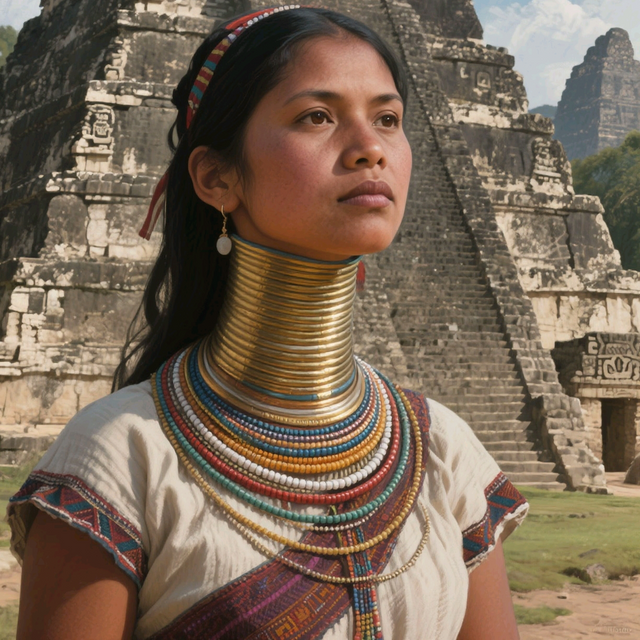Why did the Mayans have pointy heads?
In ancient Maya civilization, newborn babies' heads were often tightly bound with wooden boards to apply continuous pressure from the front and back. Since the infant skulls were not yet fully ossified and were soft and elastic, it only took a few months for the skull to deform, gradually becoming longer and more inclined.
This deformed skull was not only a symbol of "beauty" but also a reflection of social status and divine identity. Archaeologists have found that the more pronounced the deformation, the higher the social rank, indicating a sacred view of the body — the more "unnatural" the shape, the closer one was to the divine.
These unique skull shapes are also frequently depicted in Maya murals and sculptures, serving as essential clues for us to interpret their cultural system.
🌀 The "Copper Neck Ring Aesthetics" of the Long Neck Tribe
On the other side of the world, in Southeast Asia, the Kayan people of the Karen ethnic group have developed another form of body aesthetics: copper neck rings.
From a young age, girls begin to wrap copper rings around their necks, adding more rings as they grow older. The final "long neck" visual effect is not the result of an actual elongation of the neck, but the weight of the copper rings gradually compresses the clavicle and shoulders, making the neck appear longer and thinner.
In this matrilineal society, the number of copper rings worn is not only an aesthetic symbol but also a representation of social status and marriage prospects. The more rings, the higher the family’s status, and it increases the likelihood of favorable marriage alliances.
⚠️ The Physical Cost of Body Modifications
While these body modifications reflect cultural ideals, they also come with certain physiological costs:
- 🧠 Skull deformation risks: It could lead to limited cranial development space, affecting brain growth.
- 🦴 Neck ring side effects: Women in long neck tribes gradually rely on the copper rings to support their necks, leading to muscle atrophy. Removing the rings later in life could cause severe sagging or injuries.
- 📉 Spinal deformation and chronic pain: Adult women typically wear copper rings weighing 5–10 kilograms, leading to chronic neck problems as they age.
Despite these physical drawbacks, these traditions are still seen as a source of pride and group identity, passed down through generations.
🌍 The Cultural Code of "Beauty": No Universal Standard, Only Meaning
From the Maya to Southeast Asia, from skull deformation to copper neck rings, these body modifications reflect each culture's redefinition of beauty and identity.
Beauty has never been an absolute standard; it is a meaning shaped by culture.
Although these traditions have gradually declined in modern society, they serve as valuable remnants of human cultural diversity, reminding us to embrace different civilizations' survival wisdom with a more inclusive perspective.
